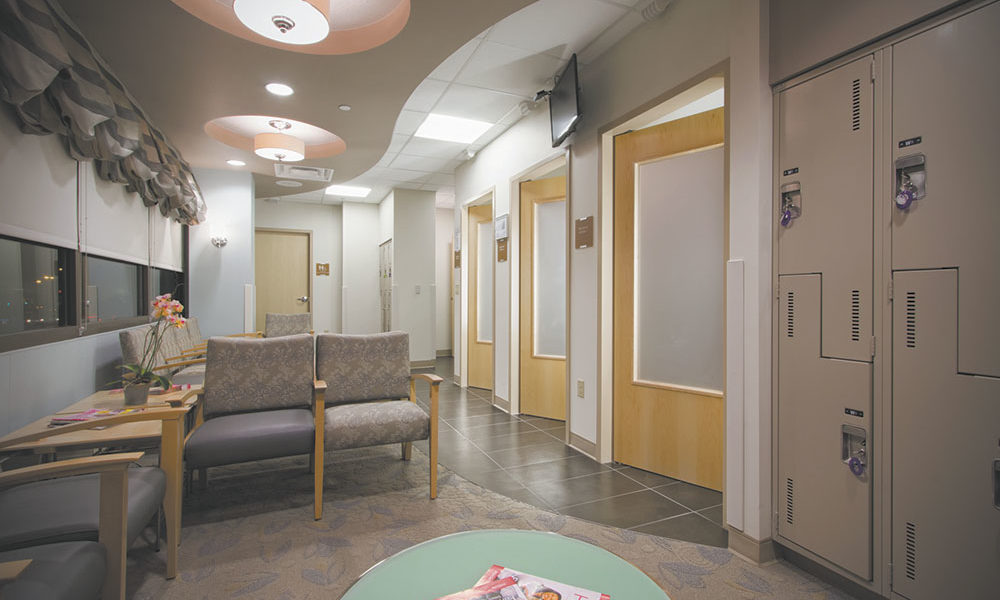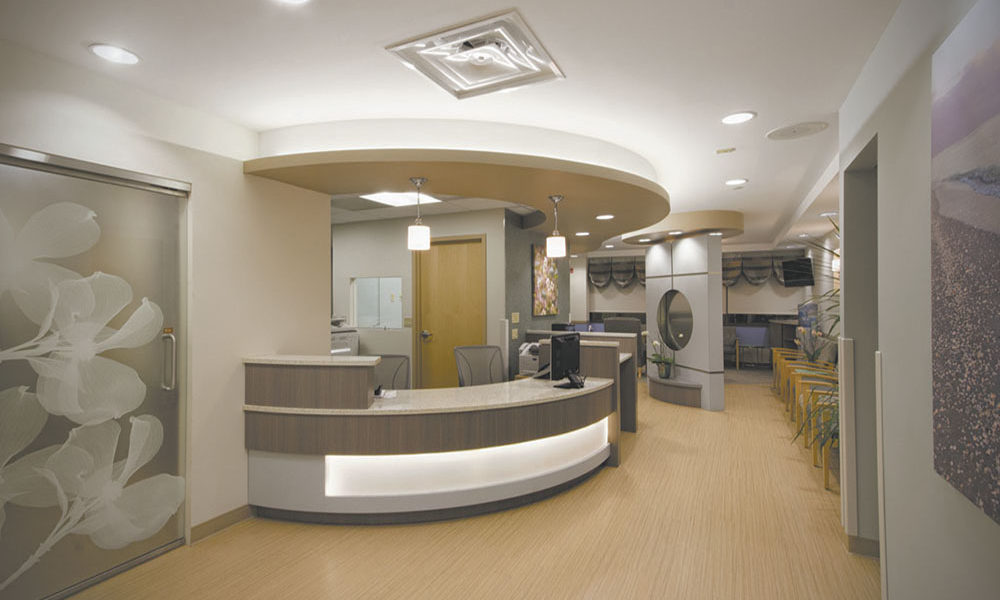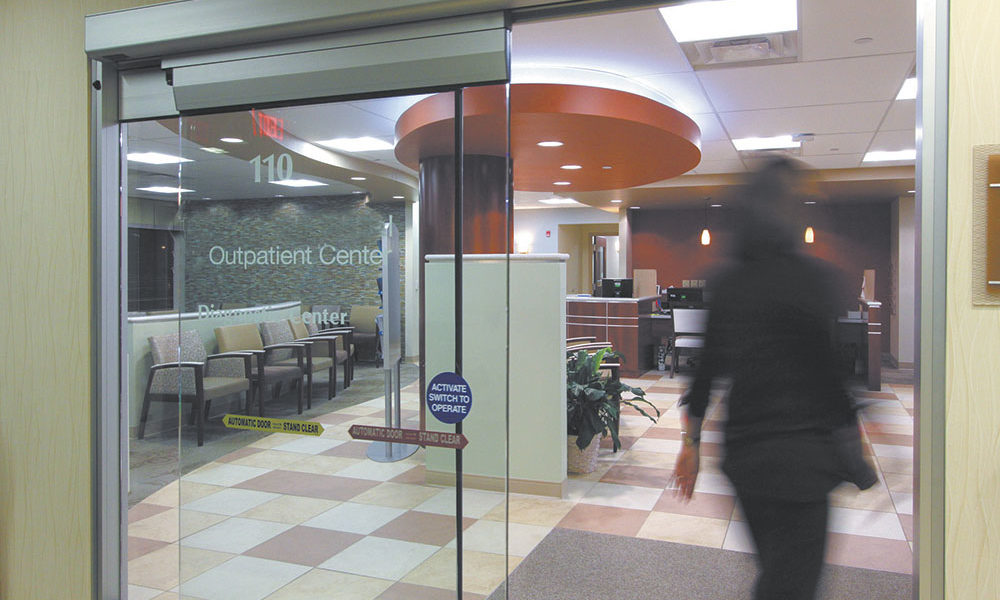Off-Campus Retrofits + The Superior Patient Experience
We are in the midst of a paradigm shift in healthcare delivery. Hospitals continue to see patients with increased acuity, and outpatient services are being located in more convenient, less foreboding structures, closer to their homes. Moving outpatient services off campus to an ambulatory care center within a community has many benefits.
Primary care providers have the opportunity to work in a collaborative environment often with other providers such as specialty care, blood lab, diagnostic imaging and rehabilitation. The smartphone generation of patients likes the fast and convenient “one-stop” access. These ambulatory care centers often support community health initiatives by offering wellness programs, health screening and education programs.
One of the initial decisions that must be made when considering moving outpatient services off the hospital campus is should the freestanding ambulatory care center be housed in new construction or in a retrofit of an existing building? There is much to consider when evaluating an existing building for a new ambulatory care center. While economics and return on investment play a significant role in this decision, the focus on creating a superior patient experience is becoming increasingly influential in evaluating options.
Mitigate a challenging entrance
A holistic design that accommodates the patient’s physical and psychological needs contributes to a superior patient experience. If a patient starts their encounter with confusing or distant parking, has difficulty getting into the building or finding their way to their appointment, the staff is at an immediate disadvantage with an already agitated and dissatisfied patient.
Many office buildings have a series of 3-foot-wide manual doors in the succession of a vestibule. Not only does a patient need to maneuver themselves and a walker or crutches through one heavy door, but also as they proceed — another awaits. For a successful ambulatory care center, patients in wheelchairs or with walkers or crutches will require more than one 3-foot automatic entrance door activated by a paddle on the wall. The appropriate entrance design includes an enclosed vestibule with wide, sliding doors that automatically open by a motion sensor or a large revolving door solution.
Either solution requires adjustment to the mechanical systems to keep the environment in the vestibule or entrance lobby at a comfortable temperature as the original design likely never contemplated the number of door openings experienced in a healthcare occupancy.
Alleviate patient wait times
One of the most common complaints is patient wait time. Great advancements provide for efficient patient throughput within the practice site. These new technologies and Lean design processes, however, are for naught if the first experience a patient has is waiting a long time in a crowded elevator lobby. When considering an existing building to retrofit to an ambulatory care center, one must evaluate the elevator count, speed and cab size. For facilities that will have a high patient load for orthopedic and/or physical therapy services on an upper floor, a larger cab size is ideal. This type of attention to vertical circulation is important, as the original building use was probably not designed for this extensive and consistent flow of persons.
One process technique often employed to create efficiencies is a centrally located registration area near the front door with both staffed check-in stations and electronic kiosks. Does the building being considered accommodate this type of space? For patients who are smartphone and computer savvy, there is likely no hesitation with entering the required information at a kiosk and then waiting to be called for their appointment. For patients intimidated by the kiosk, staff should be stationed nearby to encourage and assist the use of this technology. The key to central registration is that it is central and occurs once during the patient visit. Requiring multiple registrations during that day’s visits to multiple services in the building is a substantial dissatisfier for all age groups regardless of registration methodology.
Creating warm, hospitable interiors
Though a room’s layout and the 3-D space created within is critical to consider, color and texture play a powerful role within a space. Selecting colors and materials of elements found in nature invokes a calm feeling for patients during what might be considered a stressful experience. By adding a bold accent color or mosaic tile to one wall, the space will seem more grounded and inviting to patients. The goal is to create a warm and hospitable space, with comfortable furniture, interesting finishes of color, pattern and texture and warmly lit decorative lighting, so that patients feel at ease with their experience.
Finally, consider the overall feel of the spaces within the building. Is the floorplate depth narrow enough and exterior glazing large enough to provide adequate natural light in all patient areas? Is the floor-to-floor height such that higher ceilings can be provided in larger spaces like waiting rooms, a therapy gym or X-ray room? If a tenant of a leased building, will you have control of the finishes and signage in public spaces? Or, will patients struggle to navigate through a low-lit, beige lobby with minimal signage?
There is much to consider when evaluating an existing building for a new ambulatory care center — all of which are important issues and potential challenges to overcome so that the most holistic building design can be provided. Keeping the focus on the patient experience is the key to success and high patient satisfaction. This includes providing a clear and convenient circulation path, seamless and friendly registration, efficient patient throughput and an aesthetically pleasing environment.
Posted June 30, 2016
More Articles:
- Coverings 2024
Apr 22, 2024 – Apr 25, 2024 - Hospital, Outpatient Facilities & Medical Office Buildings Summit
Apr 25, 2024 – Apr 25, 2024 - CxA Workshop & Exam
Apr 29, 2024 – Apr 30, 2024 - EMP Seminar & Exam at CxEnergy 2024
Apr 29, 2024 – Apr 30, 2024 - CxEnergy
Apr 29, 2024 – May 2, 2024 - PHCC West 2024
Apr 29, 2024 – May 2, 2024 - Lean in Design Forum 2024
May 1, 2024 – May 2, 2024














